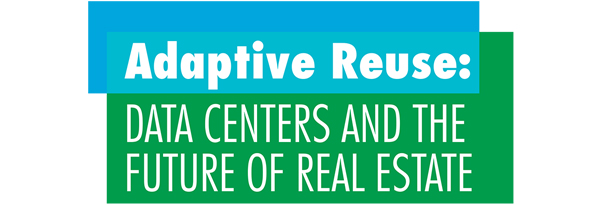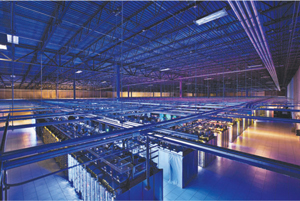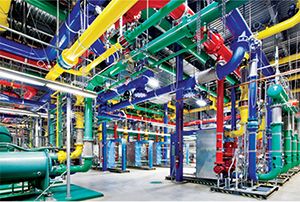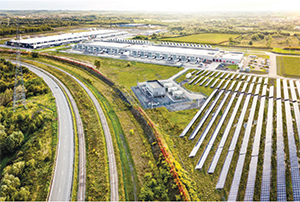
By Rich Keagy, PE, LEED

Vacant office, retail and other commercial real estate properties are increasing in the wake of temporary and permanent business closures caused by the COVID-19 pandemic. As once bustling facilities are shuttered and more people work from home, adaptive reuse opportunities are surfacing to meet the increasing demand for at least one type of property—data centers.
As business owners assess post pandemic needs, future occupancy rates fluctuate for their retail establishments, industrial sites and office spaces. Consider that office vacancy rates in the U.S. remained high, above 18%, in the first quarter of 2021, and vacancy rates for retail space also increased slightly during that time, according to the Associated Press. Citing Moody’s Analytics, the AP reported that vacancy rates for retail properties are expected to climb to 11% or 12%, due in part to last year’s near doubling of online retail purchases.

Those trends are coupled with an increasing business demand for high-speed computing and data cloud storage and the shift of many daily activities to an online environment. As the amount of data increases exponentially year-to-year, so too does the need for robust data centers that can securely manage many zettabytes of data, and investors are taking note. Market Watch reported in July 2021 that the data center construction market is expected to balloon from $18.6 billion in 2018 to $30 billion by 2024.
ADAPTIVE REUSE
The phrase “adaptive reuse” was coined to describe a plan to convert abandoned properties to boost the economy and prop up business activities in local communities. As the demand for data centers and mission-critical buildings explodes, developers are finding clever ways to adapt existing structures into data centers.

Adaptive reuse is prevalent in commercial and residential real estate as well as in the data center sector. Concepts surrounding adaptive reuse specifically related to data center spaces are driven by the market, in which geography plays a role relative to the end user and the desired scale of a proposed facility. What makes good candidate sites versus what doesn’t can be deciding factors for owners and investors considering adapting sites for reuse as data centers.
Data centers have become larger and more prevalent within different markets, and investors have targeted the most ideal locations in and around large urban areas where high-volume energy, water and communications infrastructure is readily available. The top U.S. markets for data center development include northern Virginia, parts of California, Atlanta, New York, New Jersey, Chicago and Phoenix, according to CBRE. Building additional data centers in those areas is complicated by limited power generation, connectivity and water availability.

If developers can focus on expectations and understand what their IT kit is going to look like, they can take advantage of some well-located properties. A developer should be looking at a range of densities to cover a variety of customers. Facilities that feature densities of 100 kilowatts to 150 watts per square foot can still be effective at supporting large data, provided the flooring is structurally sufficient to support the equipment. Determining core technical requirements opens new potential sites and creates many possibilities in the adaptive reuse market.
Rich Keagy, PE, LEED is a Senior Associate and Practice Leader at Woolpert. He can be reached at [email protected].